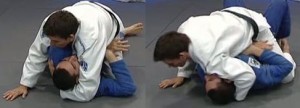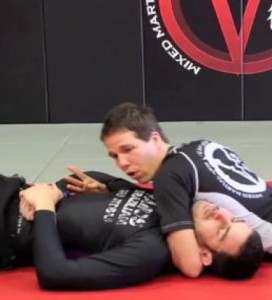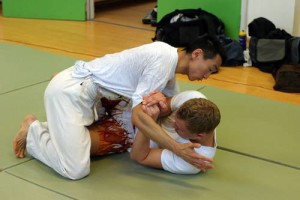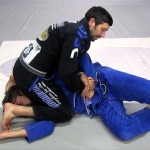See http://bjjpressure.com/surviving-underneath-side-control-northsouth/ for some thoughts on simply surviving rather than escaping.
This post is about principles of escaping side control, using some videos by Marcelo Garcia to illustrate the examples. Note that this is about underlying general concepts, rather than the mechanics of the specific movements that he’s doing. For more on the movements, check out http://www.mginaction.com/ and http://artechokemedia.com/sit-up-escape-system/
First, take a look at the videos.
Marcelo Garcia side control escapes:
Sit up escape:
Elbow push escape:
When it comes time to escape, I’d focus on a few principles, IN ADDITION to the ones already listed in the survival post:
- Whichever direction the top person’s weight is leaning, push them more in that direction.
- Whichever direction you’re pushing now, you can anticipate that the opponent will push back in the opposite direction, so get ready to go with their force
- When you escape, push your opponent and move yourself away at the same time. This is more effective than doing either in isolation
- If possible, misalign your opponent’s body.
Whichever direction the top person’s weight is leaning, push them more in that direction.
If you imagine the top person is on your right side, and driving very hard across your body to your left, to turn into them and shrimp away will be very difficult, because you have to go against the force of their legs driving straight forward. In this situation, it’s better to figure out an escape that goes with their energy and pushes them more to the left. See the ‘elbow push’ video for an example. The first part of the video shows how to redirect the energy to the left.
Whichever direction you’re pushing now, you can anticipate that the opponent will push back in the opposite direction, so get ready to go with their force
An example of this would be at about 3:30 in the elbow push video. He talks about if the opponent tries to drop weight back to the right/south, and how to switch to pushing the opponent more to the right/south.
Another example is in the sit up escape video at about 7:00. He talks about how there’s a situation where the opponent holds on to your legs and drives north, so it’s hard to push the opponent more south. In that case, he underhooks and drives north, going with the opponent’s new energy.
A key thing to understand here is that you don’t necessarily have to have super fast reflexes. You know what the most likely defense is, so you’re ready to bust out a counter to the defense by pushing in the same direction that the defense goes.
When you escape, push your opponent and move yourself away at the same time. This is more effective than doing either in isolation
Beginners tend to try too hard to move the opponent. If the other person is bigger, stronger, and on top in a good position, moving them will be hard. It’s better to focus more on moving yourself. But even better still is to do both at the same time. If you watch Marcelo do the sit up escape, you can see the he is pushing on the opponent’s shoulder to elevate that shoulder, and twist the opponent’s body at the hips. At the same time, he also moves his own body away to sit up. When you push the other person’s body away, it’s best to do your push in a plane where it’s weak for their body to resist (in this case, hip rotation).
Another example: If you watch the elbow push video, not only is Marcelo pushing the opponent’s elbow south and to the left, but he’s also scooting his own body north and to the right. See at about 2:14.
If possible, misalign your opponent’s body.
This means you want your opponent to be twisted or bent. They will be much weaker once this occurs. For example, if you watch the sit up escape clip, you can see that after Marcelo sits up, his opponent is twisted. The opponent has his knees facing down towards the ground, but his upper body is tilted sideways. See 2:30 for what this looks like. The opponent is weak and off balanced as long as this condition is true. This misalignment is often set up by pushing on one of your opponent’s shoulders, so that shoulder is elevated while the other one stays low. You can also create misalignment by pushing on the opponent’s neck and causing the chin to look away from the direction the opponent’s hips are facing.
More videos:
Sit up escape in action:
https://www.youtube.com/watch?v=UJea-WyHJEM
Elbow push in action:
https://www.youtube.com/watch?v=tmGqgXnuNBE
Hip roll escape:
https://www.youtube.com/watch?v=78NAEI_Gzzw
Hip roll in action:
https://www.youtube.com/watch?v=Y6OGtQxi3Mg
Blog post discussing these escapes in action being used by Rory MacDonald vs JT Torres:
http://bjjpressure.com/marcelo-garcia-style-side-control-escapes-rory-mcdonald-vs-jt-torres/



